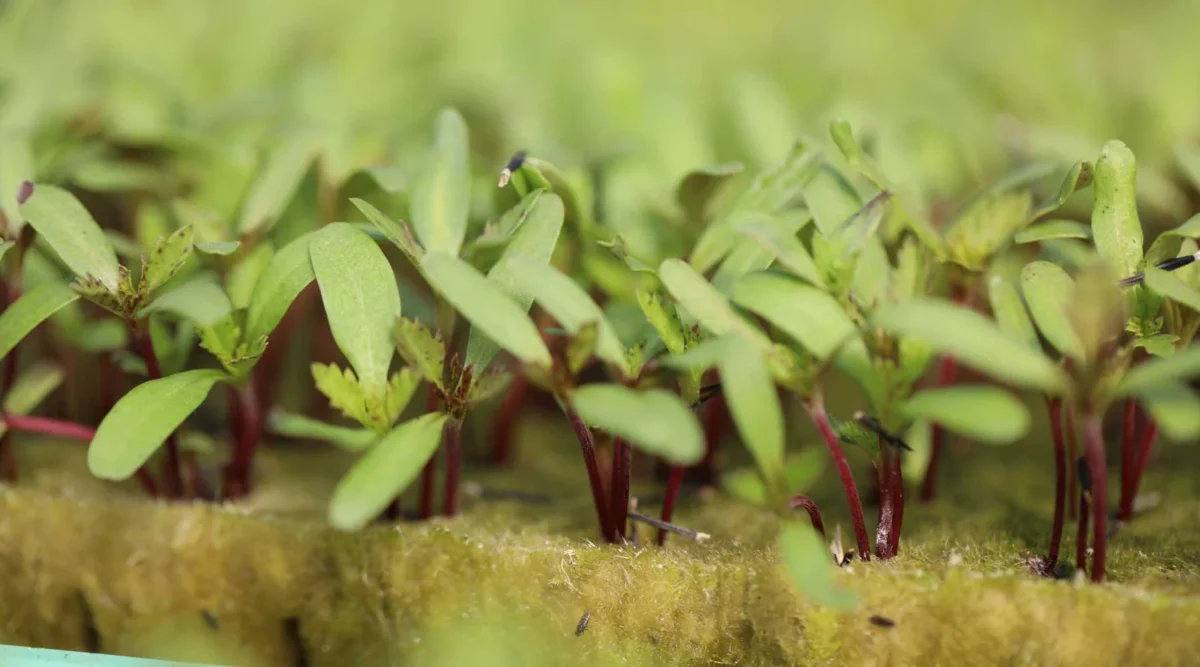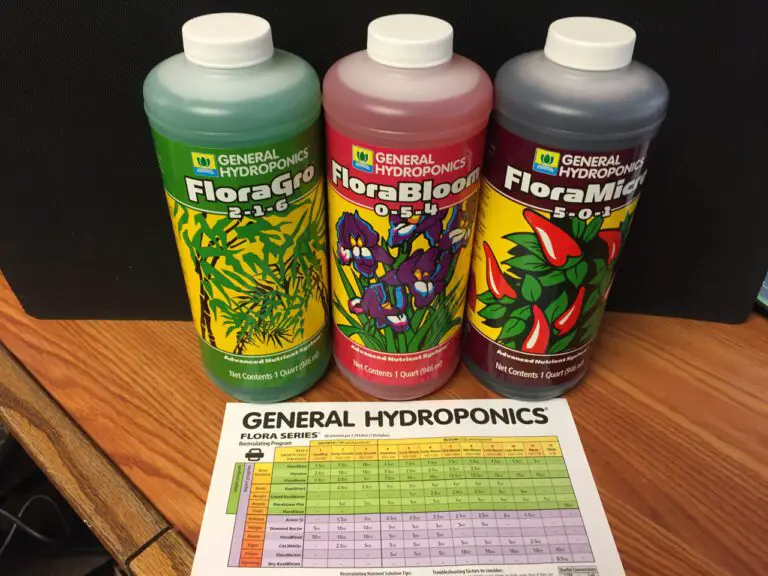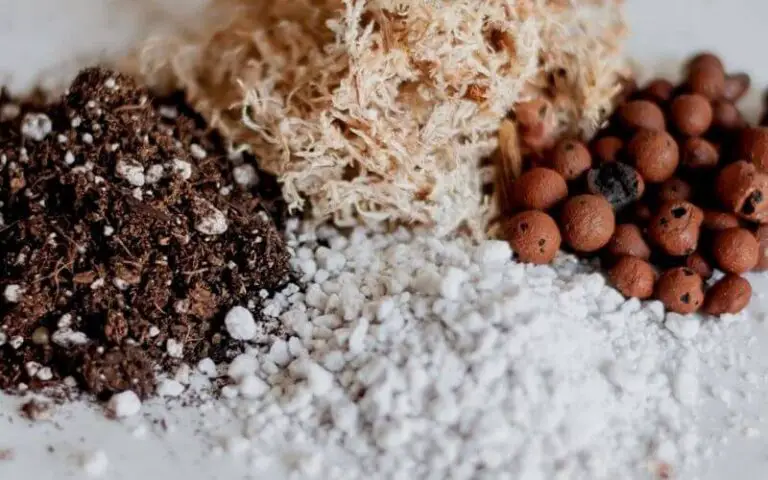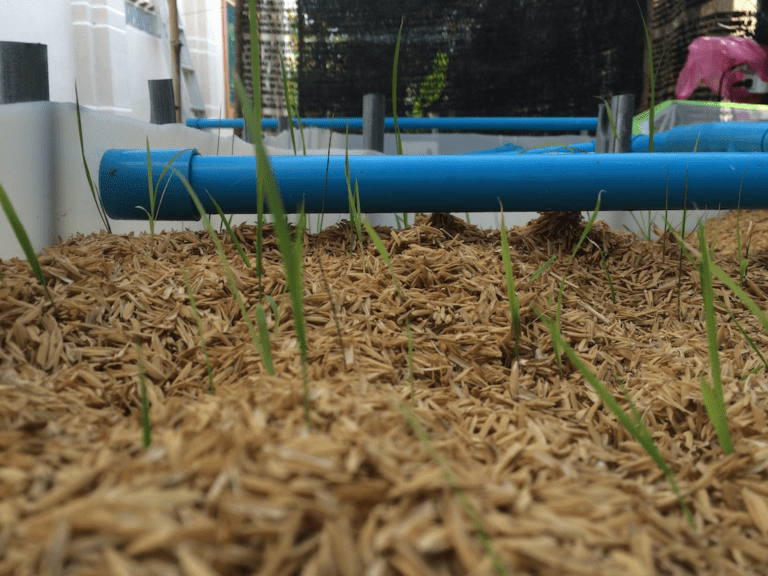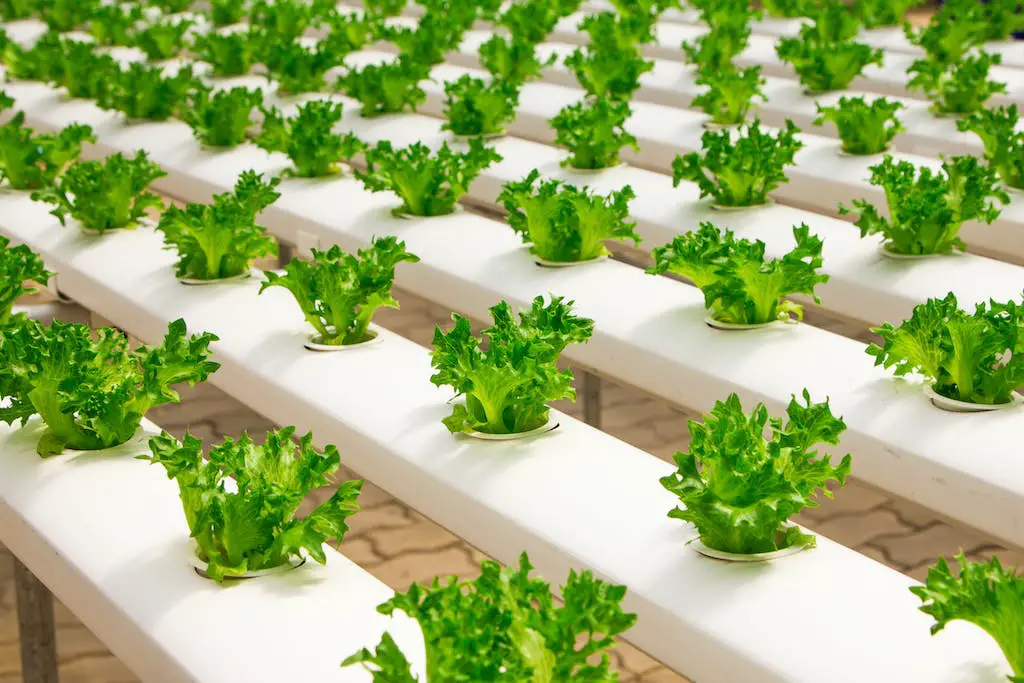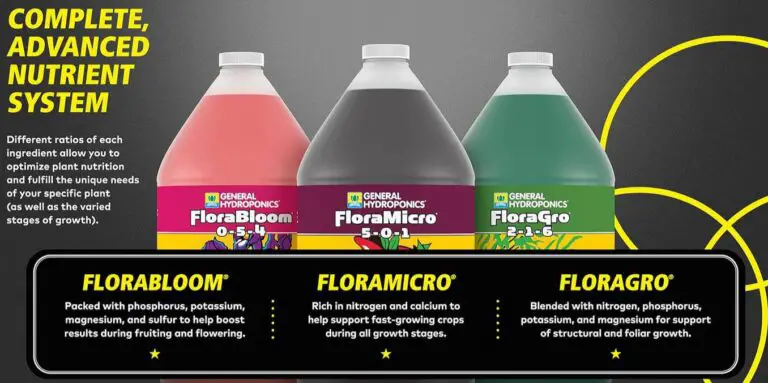Insulating with Rockwool: Preparing Your Medium for Hydroponic Growing
Table of Contents
Insulating with Rockwool: Preparing Your Medium for Hydroponic Growing
Insulating with Rockwool is a crucial step in preparing your medium for hydroponic growing. By properly insulating your system, you can create a controlled environment that promotes optimal plant growth and maximizes yield. Rockwool, also known as mineral wool, is a popular choice for insulation in hydroponics due to its unique properties and benefits.
One of the key advantages of using Rockwool as an insulating material is its outstanding thermal insulation capabilities. Rockwool has low thermal conductivity, meaning it prevents heat transfer between the nutrient solution and the outside environment. This insulation helps maintain a stable temperature within the hydroponic system, which is essential for the well-being of plants. By preventing temperature fluctuations, Rockwool allows plants to thrive and ensures consistent growth throughout the growing cycle.
Additionally, Rockwool provides excellent moisture retention properties. Its fibrous structure allows it to absorb and retain moisture, providing plants with a constant supply of water. This moisture retention is especially beneficial in hydroponic systems, where plants obtain their nutrients directly from the nutrient solution. Rockwool acts as a reservoir, ensuring that plants have access to water and nutrients even during periods of low humidity or limited water availability. This increased water-holding capacity also reduces the frequency of watering, making it a convenient choice for busy gardeners.
In the next section, we will explore the different types and forms of Rockwool available for hydroponic growing, allowing you to choose the most suitable option for your specific needs.
• Rockwool has outstanding thermal insulation capabilities, preventing heat transfer and maintaining a stable temperature within the hydroponic system.
• The insulation provided by Rockwool allows for consistent plant growth throughout the growing cycle.
• Rockwool’s fibrous structure enables it to absorb and retain moisture, ensuring plants have a constant water supply.
• This moisture retention is especially beneficial in hydroponic systems where plants obtain their nutrients directly from the nutrient solution.
• Rockwool acts as a reservoir, providing water and nutrients even during periods of low humidity or limited water availability.
• Its increased water-holding capacity reduces the frequency of watering, making it convenient for busy gardeners.
1. Understanding the Importance of Insulation in Hydroponic Growing
Insulation plays a crucial role in hydroponic growing, providing a stable and controlled environment for plants to thrive. By creating a barrier between the external conditions and the root zone, insulation helps maintain optimal temperature and moisture levels, ultimately promoting healthy growth and increased yields.
One of the main benefits of insulation in hydroponics is its ability to protect plants from extreme temperature fluctuations. Whether it’s scorching heat or biting cold outside, a well-insulated hydroponic system can shield the plants from these unfavorable conditions, creating a more favorable environment for growth. Additionally, insulation helps prevent heat loss during colder months, ensuring that the plants receive a consistent and comfortable temperature for optimal development.
Furthermore, insulation helps maintain ideal moisture levels by minimizing evaporation, retaining water, and preventing excess humidity. This is particularly important in hydroponics, where the nutrient solution needs to be carefully controlled. Insulation reduces the risk of water loss and helps preserve the precious resources, ensuring that plants receive the necessary hydration throughout their growth cycle.
In conclusion, understanding the importance of insulation in hydroponic growing is vital for gardeners and enthusiasts seeking to create an optimal growing environment. By regulating temperature fluctuations and preserving moisture levels, insulation provides the foundation for successful hydroponic cultivation. Now, let us explore the advantages of using Rockwool as an effective insulating material in hydroponics.
• Insulation creates a stable and controlled environment for plants to thrive in hydroponic growing.
• It acts as a barrier between external conditions and the root zone, maintaining optimal temperature and moisture levels.
• Insulation protects plants from extreme temperature fluctuations, shielding them from scorching heat or biting cold outside.
• It helps prevent heat loss during colder months, ensuring consistent and comfortable temperatures for plant development.
• Insulation minimizes evaporation, retains water, and prevents excess humidity, maintaining ideal moisture levels in hydroponics.
• It reduces the risk of water loss and preserves precious resources, ensuring necessary hydration for plants throughout their growth cycle.
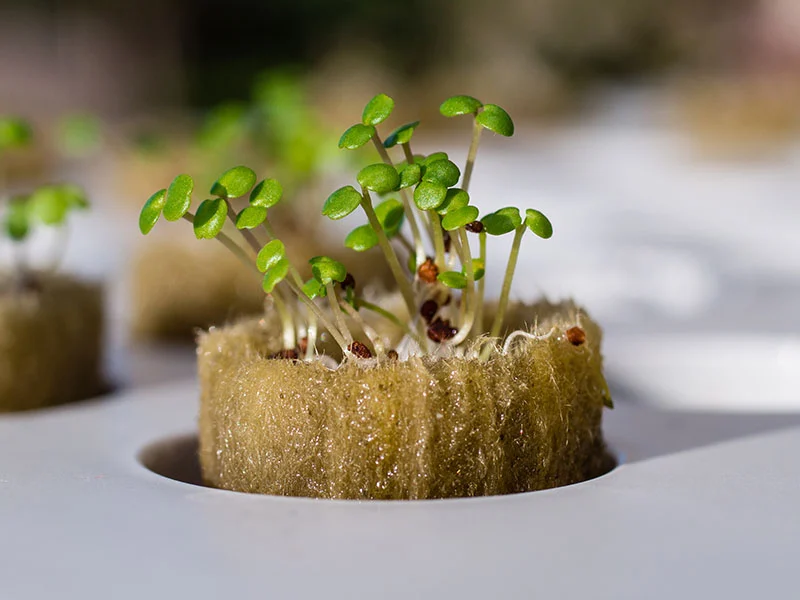
2. The Advantages of Using Rockwool as an Insulating Material
Rockwool is undoubtedly one of the most popular choices for insulation in hydroponic systems today. This versatile material offers a range of advantages that make it highly desirable for gardening enthusiasts. Firstly, rockwool has excellent water retention properties, allowing it to hold moisture for extended periods. This is crucial in hydroponic setups, as it ensures a consistent and reliable water supply to the plants.
Another significant advantage of rockwool is its ability to provide excellent insulation. It effectively traps heat, creating a stable and controlled environment for plants to thrive in. This is particularly beneficial in regions with extreme temperature fluctuations or during colder seasons when maintaining optimal temperatures can be challenging. Additionally, rockwool insulation helps to reduce the risk of water evaporation, preventing excessive moisture loss and promoting water efficiency in the system.
Furthermore, rockwool is a sterile medium, free from pests, diseases, and weed seeds. This feature eliminates the need for chemical treatments or pesticides, making it an environmentally friendly option for those looking for sustainable gardening practices. Its inert nature also allows for easier control over nutrient uptake by the plants, ensuring precise and efficient delivery of essential elements for optimal growth and productivity.
• Rockwool has excellent water retention properties, ensuring a consistent and reliable water supply to plants in hydroponic systems.
• It provides excellent insulation, trapping heat and creating a stable environment for plants to thrive in.
• Rockwool insulation helps reduce the risk of water evaporation, promoting water efficiency in the system.
• It is a sterile medium, free from pests, diseases, and weed seeds, eliminating the need for chemical treatments or pesticides.
• Its inert nature allows for easier control over nutrient uptake by plants, ensuring precise and efficient delivery of essential elements.

3. Exploring the Different Types and Forms of Rockwool for Hydroponic Growing
Rockwool is a widely used insulation material in hydroponics due to its excellent water retention and air circulation properties. It comes in different types and forms, each with its own unique characteristics that cater to specific growing needs.
One of the most common types of rockwool used in hydroponics is known as slabs or blocks. These are large rectangular pieces of rockwool that provide a stable structure for plant roots to grow. Slabs are ideal for larger plants or crops that require substantial root space. They can be easily cut into smaller sections to accommodate different plant sizes and spacing requirements.
Another popular form of rockwool is cubes or blocks. These are smaller, cube-shaped pieces that are commonly used for seed propagation or when starting new plants. Cubes provide a compact and controlled environment for young roots to establish themselves before being transplanted into larger growing mediums.
In addition to slabs and cubes, there are also granulated forms of rockwool available. These consist of small particles or fibers that can be mixed with other growing mediums or used as a standalone material. Granulated rockwool is particularly useful for creating custom blends or improving the water-holding capacity of existing mediums.
When choosing the right type and form of rockwool for your hydroponic system, consider the specific needs of your plants, the available space, and your overall cultivation goals. By exploring the different options, you can optimize the insulation and growing conditions in your hydroponic setup, leading to healthier and more productive plants.
• Slabs or blocks are large rectangular pieces of rockwool that provide a stable structure for plant roots to grow.
• Slabs are ideal for larger plants or crops that require substantial root space.
• Slabs can be easily cut into smaller sections to accommodate different plant sizes and spacing requirements.
• Cubes or blocks are smaller, cube-shaped pieces of rockwool commonly used for seed propagation or starting new plants.
• Cubes provide a compact and controlled environment for young roots to establish themselves before being transplanted.
• Granulated rockwool consists of small particles or fibers that can be mixed with other growing mediums or used as a standalone material.
• Granulated rockwool is useful for creating custom blends or improving the water-holding capacity of existing mediums.
4. How to Properly Prepare Rockwool for Hydroponic Use
Preparing rockwool for hydroponic use is an essential step in ensuring optimal growing conditions for your plants. Before using rockwool in your hydroponic system, it is important to properly soak and rinse it to remove any impurities and adjust its pH level to create an ideal environment for plant growth.
To begin the preparation process, immerse the rockwool cubes or slabs in a container filled with pH balanced water. pH levels between 5.5 and 6.5 are typically recommended for most hydroponic crops. Allow the rockwool to soak for at least one hour, ensuring that it is fully saturated.
Once the soaking period is complete, drain any excess water from the rockwool and give it a thorough rinse. This rinsing step helps remove any loose fibers or debris that may be present. Additionally, it promotes better water and nutrient absorption by creating a clean and open structure within the rockwool.
By taking the time to properly prepare rockwool for hydroponic use, you are setting the stage for successful plant growth. The initial soaking and rinsing process ensures that the rockwool is clean and pH balanced, providing the ideal conditions for your plants to thrive.
• Immerse the rockwool cubes or slabs in a container filled with pH balanced water.
• Recommended pH levels for most hydroponic crops are between 5.5 and 6.5.
• Allow the rockwool to soak for at least one hour to ensure full saturation.
• Drain any excess water from the rockwool after soaking.
• Thoroughly rinse the rockwool to remove loose fibers and debris.
• Rinsing promotes better water and nutrient absorption by creating an open structure within the rockwool.
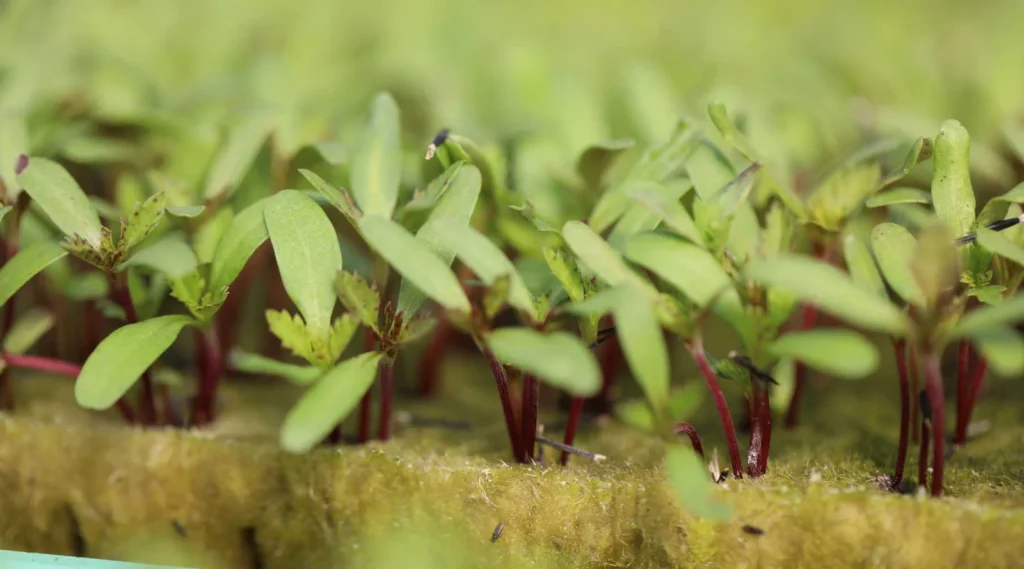
5. Essential Safety Precautions When Handling Rockwool Insulation
Handling rockwool insulation in hydroponics requires careful attention to safety precautions to protect both yourself and the environment. Rockwool, made from molten volcanic rock spun into fibers, can potentially cause skin irritation and respiratory issues if not handled properly.
First and foremost, it is crucial to wear protective gear when working with rockwool insulation. This includes gloves, long-sleeved shirts, pants, and safety glasses or goggles. The fibers of rockwool can be irritating if they come into contact with your skin or eyes, so taking these precautions can minimize the risk of injury.
Additionally, it is essential to handle rockwool insulation in a well-ventilated area or wear a mask to avoid inhaling any airborne fibers. Working in a well-ventilated space helps to disperse any fibrous particles, reducing the chances of respiratory issues. By taking these safety measures, you can ensure your well-being while working with rockwool insulation in hydroponic systems.
• Wear protective gear such as gloves, long-sleeved shirts, pants, and safety glasses or goggles
• Handle rockwool insulation in a well-ventilated area
• Consider wearing a mask to avoid inhaling airborne fibers
• Minimize the risk of skin irritation and respiratory issues by taking these precautions
• Ensure your well-being while working with rockwool insulation in hydroponic systems
Here is a table that summarizes the essential safety precautions when handling Rockwool insulation:
| Precaution | Description |
|---|---|
| Wear gloves | Avoid handling the insulation with bare hands to prevent contamination from perspiration . |
| Ensure ventilation | Ensure good ventilation to avoid inhaling any fibers that may be released during installation . |
| Use protective gear | Use protective gear such as a dust mask, safety goggles, and long-sleeved clothing to avoid skin and eye irritation . |
| Clean up spills | Keep spills away from drains, surface and ground water. Use a vacuum cleaner or dampen with water spray prior to sweeping up . |
| Dispose of properly | Refer to Section 13 of the Safe Use Instruction Sheet for proper disposal instructions . |
Rockwool insulation is made of spun-fiber combination of basalt and limestone and is used as a growing medium in hydroponic systems . It is important to take necessary
6. The Role of pH Levels in Rockwool Insulation for Hydroponic Systems
Maintaining the proper pH levels within your hydroponic system is essential for the success of your rockwool insulation. Rockwool has a natural pH of around 7.5, which is slightly alkaline. However, for optimal plant growth and nutrient uptake, it is recommended to adjust the pH of your rockwool to a slightly acidic level between 5.5 and 6.5.
The pH level affects the availability of essential nutrients to your plants. When the pH is too high or too low, it can lead to nutrient deficiencies or toxicities, inhibiting plant growth and vitality. By maintaining the correct pH level, you can ensure that all the necessary nutrients are readily available for your plants to absorb, promoting healthy growth and abundant yields.
To monitor and adjust the pH level of your rockwool insulation, it is advisable to use a pH meter or test kit. This will allow you to regularly measure the pH of your nutrient solution and make necessary adjustments. To lower the pH, you can add citric acid or phosphoric acid to the nutrient solution, while to raise the pH, you can use potassium hydroxide or calcium carbonate. Regularly monitoring and adjusting the pH levels will help create an optimal growing environment for your plants, maximizing their nutrient uptake and overall performance.
• Maintaining the proper pH levels within your hydroponic system is essential for the success of your rockwool insulation.
• Rockwool has a natural pH of around 7.5, which is slightly alkaline.
• For optimal plant growth and nutrient uptake, it is recommended to adjust the pH of your rockwool to a slightly acidic level between 5.5 and 6.5.
• The pH level affects the availability of essential nutrients to your plants.
• When the pH is too high or too low, it can lead to nutrient deficiencies or toxicities, inhibiting plant growth and vitality.
• By maintaining the correct pH level, you can ensure that all necessary nutrients are readily available for your plants to absorb, promoting healthy growth and abundant yields.
• To monitor and adjust the pH level of your rockwool insulation, it is advisable to use a pH meter or test kit.
• This will allow you to regularly measure the pH of your nutrient solution and make necessary adjustments.
• To lower the pH, you can add citric acid or phosphoric acid to the nutrient solution.
• To raise the pH, you can use potassium hydroxide or calcium carbonate.
Regularly monitoring and adjusting the pH levels will help create an optimal growing environment for your plants,
maximizing their nutrient uptake and overall performance.
Sure, here is a table that summarizes the role of pH levels in Rockwool insulation for hydroponic systems:
| pH Level | Role |
|---|---|
| 5.5-6.0 | Creates an environment conducive to nutrient uptake . |
| > 6.0 | Can be detrimental to plants . |
Rockwool is a spun-fiber combination of basalt and limestone that is used as a growing medium in hydroponic systems . The creation of Rockwool leaves it with a high pH level, and plants prefer a lower pH to grow, especially at first. Soaking the cubes in water until you reach a pH range of 5.5-6 is recommended . This helps create an environment that is conducive to nutrient uptake and helps the seeds sprout and grow into full plants .
7. Maintaining Optimal Moisture Levels in Rockwool Insulation for Hydroponic Growing
Maintaining optimal moisture levels in rockwool insulation is crucial for successful hydroponic growing. Rockwool, being an excellent medium for retaining water, provides the necessary moisture for plant roots to thrive. However, it is essential to strike a balance as excessive moisture can lead to root rot and other issues.
To maintain the ideal moisture levels in your rockwool insulation, you should pay attention to watering frequency and volume. It is recommended to water the plants in short, frequent intervals rather than saturated watering sessions. This practice allows the rockwool to absorb water evenly and prevents waterlogging. Additionally, monitoring the moisture content of the rockwool using a moisture meter can provide accurate insights into when to water your plants. Remember, maintaining consistent moisture levels contributes to the optimal development of roots, ensuring the plant’s overall health and growth.
• Water the plants in short, frequent intervals rather than saturated watering sessions
• This allows the rockwool to absorb water evenly and prevents waterlogging
• Use a moisture meter to monitor the moisture content of the rockwool
• This provides accurate insights into when to water your plants
• Consistent moisture levels contribute to optimal root development
• Optimal root development ensures overall plant health and growth
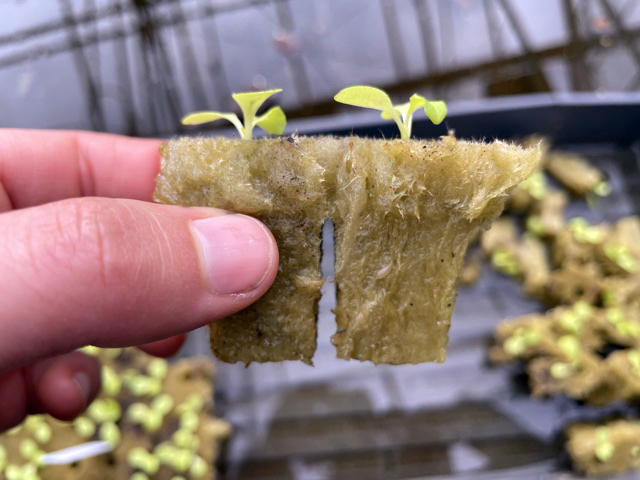
8. Understanding the Nutrient Absorption Capacity of Rockwool in Hydroponics
Rockwool is widely known for its excellent nutrient absorption capacity, making it a popular choice for hydroponic systems. The structure of Rockwool allows it to retain water while also providing ample oxygen to the plant roots, creating an ideal environment for nutrient uptake. This fibrous material has a high cation exchange capacity, meaning it can attract and hold onto positively charged nutrients like calcium, magnesium, and potassium.
The nutrient absorption capacity of Rockwool is further enhanced by its ability to hold onto water. This means that the plant roots can continuously access water and nutrients, ensuring optimal growth and development. Additionally, the pH-neutral nature of Rockwool allows for easier nutrient absorption as it avoids fluctuations that may hinder nutrient uptake in other media.
It is important to note that the nutrient absorption capacity of Rockwool can vary depending on factors such as the type and form of Rockwool used, the nutrients provided, and the overall health of the plant. Therefore, it is crucial for hydroponic growers to closely monitor nutrient levels and adjust the nutrient solution accordingly to ensure a thriving and productive crop.
• Rockwool has a high cation exchange capacity, allowing it to attract and retain positively charged nutrients like calcium, magnesium, and potassium.
• The structure of Rockwool retains water while providing ample oxygen to the plant roots, creating an ideal environment for nutrient uptake.
• The pH-neutral nature of Rockwool helps facilitate easier nutrient absorption by avoiding fluctuations that may hinder uptake in other media.
• Continuous access to water and nutrients in Rockwool ensures optimal growth and development of plants.
• Factors such as the type and form of Rockwool used, the nutrients provided, and the overall health of the plant can affect its nutrient absorption capacity.
• Hydroponic growers should closely monitor nutrient levels and adjust the nutrient solution accordingly to ensure a thriving crop.
9. The Importance of Properly Draining Rockwool to Avoid Waterlogging
Proper drainage is an essential aspect of utilizing rockwool insulation in hydroponic systems to avoid the risk of waterlogging. Waterlogging occurs when excess water accumulates around the roots of the plants, leading to reduced oxygen availability and nutrient uptake. This can cause root damage, stunted growth, and even the death of the plants.
To ensure effective drainage and prevent waterlogging, it is crucial to create an optimal environment for the rockwool medium. One method is to use elevated platforms or racks that allow the excess water to drain away freely. This promotes better air circulation and prevents water from accumulating around the roots. Additionally, placing a layer of pea gravel or perlite underneath the rockwool blocks can further enhance drainage capabilities.
Regular monitoring of the moisture levels in the rockwool is also important. A water content meter can be used to measure the moisture levels and determine if the medium is adequately draining. If the moisture levels are consistently too high, adjustments can be made by adjusting the irrigation frequency or amount. This ensures that the plants receive the necessary water while preventing the risk of waterlogging. Overall, proper drainage is crucial for the success of hydroponic systems utilizing rockwool as an insulation medium.
• Proper drainage is essential in rockwool insulation to avoid waterlogging.
• Waterlogging can lead to reduced oxygen availability and nutrient uptake, causing root damage and stunted growth.
• Elevated platforms or racks can promote effective drainage by allowing excess water to drain away freely.
• Placing a layer of pea gravel or perlite underneath the rockwool blocks enhances drainage capabilities.
• Regular monitoring of moisture levels using a water content meter helps ensure adequate drainage.
• Adjustments to irrigation frequency or amount can be made if moisture levels are consistently too high.
10. Tips for Ensuring Proper Air Circulation in Rockwool-Insulated Hydroponic Systems
Proper air circulation is essential for the health and success of rockwool-insulated hydroponic systems. Adequate airflow helps to maintain optimal oxygen levels, prevent the buildup of heat and moisture, and facilitate the exchange of gases necessary for plant growth. Here are some tips to ensure proper air circulation in your rockwool-insulated hydroponic system:
1. Ventilation System: Install a well-designed ventilation system that includes exhaust fans and intake vents. These will help in drawing fresh air into the growing area while expelling stale air. A proper ventilation system will ensure a constant flow of fresh air, preventing the buildup of heat and humidity.
2. Fan Placement: Position fans strategically within the growing space to provide even air distribution. Place fans near the plants but avoid direct airflow that could damage delicate foliage. Oscillating fans can help to move air more efficiently throughout the entire area.
3. Air Movement: Create gentle air movement around the plants by using oscillating fans or installing horizontal airflow fans. This will help prevent stagnant pockets of air and promote uniform distribution of temperature and humidity levels.
4. Eliminate Dead Air Spaces: Arrange plants and other equipment in a way that minimizes stagnant areas where air doesn’t circulate properly. Ensuring adequate spacing between plants and providing room for air to flow freely will help prevent the development of mold, disease, and pest issues.
5. Cleanliness: Regularly clean your hydroponic system to remove any debris or obstructions that may hinder airflow. Clean air intakes and exhaust fans to prevent the buildup of dust, dirt, and pathogens that could compromise air quality.
By following these tips, you can ensure that your rockwool-insulated hydroponic system has the proper air circulation necessary for healthy plant growth. Maintaining a well-ventilated environment will contribute to optimal oxygen levels, prevent the growth of pathogens, and promote vigorous plant development.
• Ventilation System: Install a well-designed ventilation system that includes exhaust fans and intake vents.
• Fan Placement: Position fans strategically within the growing space to provide even air distribution.
• Air Movement: Create gentle air movement around the plants by using oscillating fans or installing horizontal airflow fans.
• Eliminate Dead Air Spaces: Arrange plants and other equipment in a way that minimizes stagnant areas where air doesn’t circulate properly.
• Cleanliness: Regularly clean your hydroponic system to remove any debris or obstructions that may hinder airflow.
11. Effective Methods for Controlling Temperature in Rockwool-Insulated Hydroponic Growing
Managing temperature is crucial for successful hydroponic growing using rockwool insulation. Fluctuations in temperature can negatively impact plant growth and ultimately result in poor yields. Fortunately, there are effective methods to control temperature within rockwool-insulated hydroponic systems.
One method is the use of a thermostat-controlled ventilation system. By installing fans and an exhaust system in the growing area, you can regulate the temperature by adjusting the speed and frequency of air circulation. This ensures that hot air is exhausted and replaced with cooler air, helping to maintain optimal temperature levels for plant growth.
Another method is employing a cooling system such as an air conditioner or evaporative cooler. These cooling systems actively lower the temperature in the growing environment, providing a stable and comfortable climate for your plants. Additionally, using shade cloth or reflective materials on greenhouse surfaces can help reduce heat absorption, further contributing to temperature control.
By implementing these effective methods, gardeners can ensure that temperature fluctuations are kept to a minimum and create an ideal growing environment for their hydroponic plants. However, it is important to monitor temperature regularly and make adjustments as necessary to provide optimal conditions throughout the growing cycle.
– Use a thermostat-controlled ventilation system to regulate temperature
– Install fans and an exhaust system to adjust air circulation
– Exhaust hot air and replace it with cooler air for optimal temperature levels
– Employ a cooling system such as an air conditioner or evaporative cooler
– Lower the temperature in the growing environment for stable plant growth
– Use shade cloth or reflective materials on greenhouse surfaces to reduce heat absorption
– Regularly monitor temperature and make adjustments as necessary for optimal conditions
12. Avoiding Common Mistakes When Insulating with Rockwool in Hydroponics
Insulating with rockwool in hydroponics can be highly beneficial for maintaining optimal growing conditions. However, there are common mistakes that novice hydroponic gardeners often make when using rockwool as an insulation material. By being aware of these mistakes and taking the necessary precautions, you can ensure the success of your hydroponic system.
One of the most common mistakes when working with rockwool is not properly preparing it before use. Rockwool should be soaked in water with a pH level of 5.5 to 6.5 for at least 24 hours to remove any impurities and balance its pH. Failure to do so can lead to nutrient imbalance and hinder the absorption capacity of the rockwool. Additionally, it is important to rinse the rockwool thoroughly after soaking to remove excess minerals, preventing any potential nutrient lockout.
Another mistake to avoid is overwatering the rockwool. Although it is essential to maintain moisture levels for the plants’ hydration, overwatering can lead to waterlogging and oxygen deprivation. This can result in root rot and the decline of plant health. To prevent this, it is crucial to establish a proper watering schedule and monitor the moisture content of the rockwool regularly. Proper drainage is also essential in hydroponic systems using rockwool insulation to avoid water accumulation and promote healthy root development.
By taking these precautions and avoiding common mistakes, you can maximize the effectiveness of rockwool insulation in your hydroponic system. Ensuring proper preparation and maintaining optimal moisture levels will contribute to the success of your plants’ growth and overall hydroponic experience.
• Properly prepare rockwool by soaking it in water with a pH level of 5.5 to 6.5 for at least 24 hours
• Rinse the rockwool thoroughly after soaking to remove excess minerals
• Avoid overwatering the rockwool to prevent waterlogging and oxygen deprivation
• Establish a proper watering schedule and monitor moisture content regularly
• Ensure proper drainage in hydroponic systems using rockwool insulation
13. Maximizing the Lifespan of Rockwool Insulation in Hydropon
To maximize the lifespan of rockwool insulation in hydroponic systems, it is crucial to implement proper maintenance and care. One important factor to consider is monitoring the pH levels of the nutrient solution used in the hydroponic system. Rockwool has a natural pH of around 7.0, which is slightly alkaline. However, most hydroponic plants prefer a slightly acidic pH range of 5.5 to 6.5. Therefore, it is essential to regularly measure and adjust the pH of the nutrient solution to ensure optimal nutrient uptake and prevent any potential nutrient imbalances that could lead to rockwool degradation.
Maintaining optimal moisture levels is another key aspect in maximizing the lifespan of rockwool insulation. While rockwool has excellent water retention capabilities, it is important to strike a balance by allowing it to dry out between watering cycles. This helps prevent the growth of harmful microorganisms and root rot, which can significantly reduce the lifespan of the rockwool. To ensure proper moisture levels, it is advisable to use a moisture meter to measure moisture content in the rockwool and adjust watering accordingly. Additionally, proper drainage is crucial to prevent waterlogging, as excess water can lead to root suffocation and nutrient imbalances, ultimately shortening the lifespan of the rockwool insulation.
• Regularly measure and adjust the pH of the nutrient solution to maintain a slightly acidic range preferred by hydroponic plants (5.5 to 6.5)
• Prevent potential nutrient imbalances that could lead to rockwool degradation by monitoring pH levels
• Allow rockwool to dry out between watering cycles to prevent the growth of harmful microorganisms and root rot
• Use a moisture meter to measure moisture content in the rockwool and adjust watering accordingly for optimal moisture levels
• Ensure proper drainage to prevent waterlogging, which can lead to root suffocation and nutrient imbalances
Watch video and know more!
How long does Rockwool insulation typically last in hydroponic systems?
Rockwool insulation can last for several years in hydroponic systems if properly maintained.
What are some tips for maximizing the lifespan of Rockwool insulation?
Some tips include regularly monitoring and adjusting pH levels, maintaining optimal moisture levels, ensuring proper drainage, and controlling temperature and air circulation.
Can Rockwool insulation be reused in hydroponic systems?
Yes, Rockwool insulation can be reused in hydroponic systems. It can be cleaned and sterilized before reusing to prevent the spread of diseases and pests.
How often should Rockwool insulation be replaced?
The frequency of replacing Rockwool insulation will depend on factors such as the specific hydroponic system, crop type, and maintenance practices. However, typically, Rockwool insulation can last for multiple growing cycles before replacement may be necessary.
Are there any signs that indicate when Rockwool insulation needs to be replaced?
Signs that Rockwool insulation may need to be replaced include deterioration, mold or fungal growth, excessive mineral buildup, or a decline in plant health and growth.
Can Rockwool insulation be recycled?
Yes, Rockwool insulation can be recycled in some areas. Check with local recycling facilities or waste management services to determine if they accept Rockwool for recycling.
Are there any alternatives to Rockwool insulation in hydroponics?
Yes, some alternatives to Rockwool insulation in hydroponics include coconut coir, perlite, vermiculite, and clay pellets. Each alternative has its own advantages and considerations.
What precautions should be taken when disposing of Rockwool insulation?
Rockwool insulation should be disposed of according to local regulations. It is recommended to seal it in a plastic bag before disposing of it to prevent the release of fibers.
Can Rockwool insulation be used in organic hydroponic systems?
Yes, Rockwool insulation can be used in organic hydroponic systems. However, it is important to ensure that the Rockwool is sourced from organic-certified manufacturers and that it does not contain any synthetic additives or treatments.
Can Rockwool insulation pose any health risks?
Rockwool insulation can release small fibers that may irritate the skin, eyes, and respiratory system if inhaled. It is recommended to wear protective gloves, goggles, and a mask when handling Rockwool insulation.

Nicole Burke is a dynamic writer at SouthElMonteHydroponics, fueled by her passion for horticulture and environmental sustainability. Armed with a degree in Environmental Science from a renowned institution, Nicole’s expertise lies in hydroponic gardening, organic farming, and biodiversity conservation. Her insatiable curiosity and love for nature drive her to explore innovative techniques in hydroponics, seeking to revolutionize the way we grow crops in urban environments. Nicole’s writing reflects her deep commitment to promoting eco-conscious practices and fostering a deeper connection between humans and the natural world. Through her engaging storytelling, she inspires others to embrace sustainable living and harness the power of hydroponics for a greener future.

